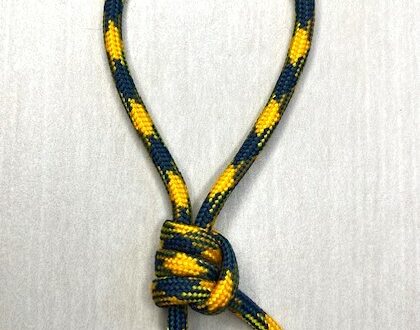
Sheepshank: The Easy Way to Shorten Rope Without Cutting
The Sheepshank knot serves the purpose of temporarily shortening a rope without cutting it or taking slack out of a line.
If a section of a rope is damaged or weakened, the Sheepshank can be used to bypass the damaged area and create a functional, shorter rope without compromising its overall strength.
It was historically used in sailing and other activities where ropes were commonly employed.
Tying Guide

- Start with a loop: Form a loop in the rope where you want the knot.
- Create two additional loops: Make two more loops by folding the rope back on itself twice, creating two additional loops.
- Secure the loops: Hold the three loops together and secure them temporarily. You should now have three loops side by side.
- Pass the working end through the loops: Take the working end (the end of the rope) and pass it through the three loops.
- Tighten the knot: Pull the working end tight to secure the loops. Adjust the size of the loops as needed.
- Secure the ends: Make sure both ends of the rope are secure to prevent the knot from coming undone.
Be aware, the Sheepshank knot is not suitable for critical loads as it can slip if not under tension.
While the Sheepshank was historically used for securing loads, particularly on trucks or trailers, and in sailing applications, it’s important to note that its usage for these purposes has diminished over time. The reason is that the Sheepshank has a tendency to slip and can unexpectedly release under certain conditions, especially when the load or tension changes. Modern alternatives, like ratchet straps are used to ensure the safety and stability of the load.
#livealifetodiefor #MoreThanMyPast #itsrogerx #official_psychi





